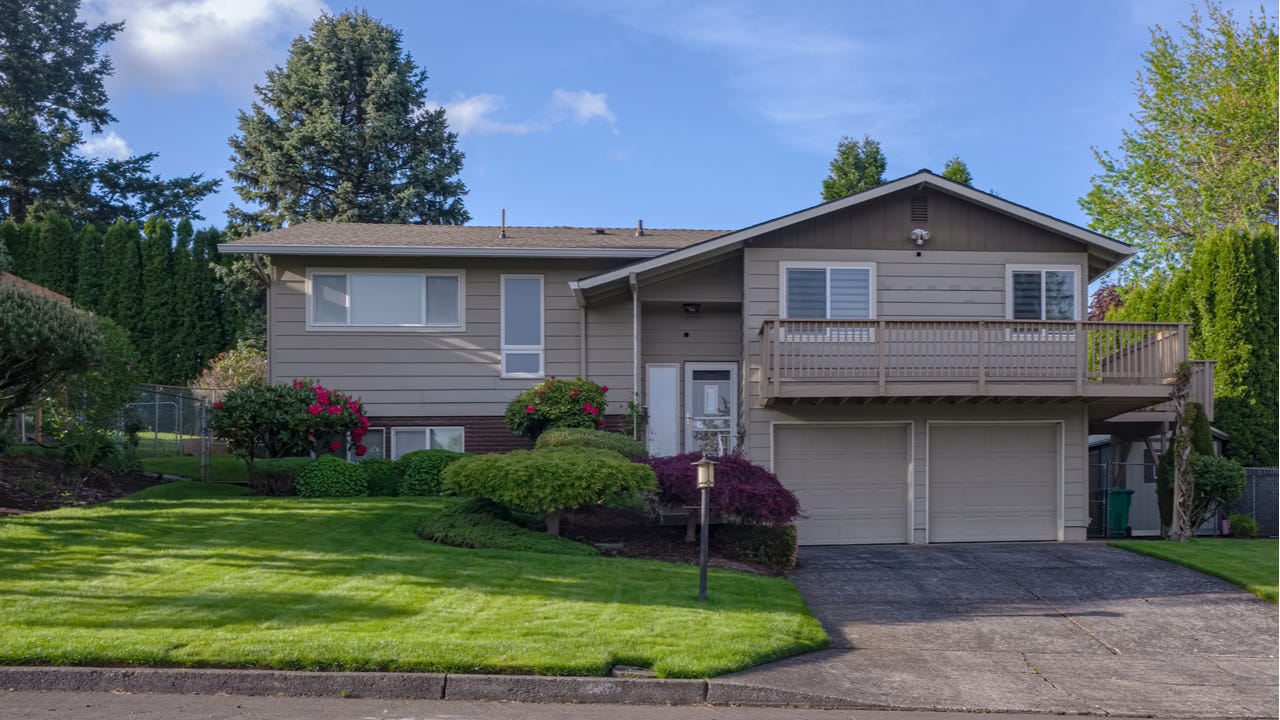How often can you refinance your home?

The Bankrate promise
At Bankrate we strive to help you make smarter financial decisions. While we adhere to strict , this post may contain references to products from our partners. Here's an explanation for .
Key takeaways
- There is no limit on how many times you can refinance your mortgage, although lenders may enforce a waiting period, typically around six months, known as a 'seasoning' requirement.
- Refinancing costs add up, and it’s a time-consuming process. But if you qualify for a rate that’s much lower than what you have now, you can save thousands in interest by refinancing.
- If a refinance would save you from delinquency or defaulting on your mortgage, refinancing can be a smart move.
Refinancing your mortgage can lower your monthly payments and save you money over the life of the loan. But it could also cost you more than you expect. Here’s a guide to how often you can refinance your mortgage — and what multiple refinances might involve.
How often can you refinance your home loan?
There is no limit to how many times you’re allowed to refinance your mortgage, though a lender might enforce a waiting period between when you close on a loan and refinance to a new one.
How soon can you refinance a mortgage?
Often, lenders have what’s called a “seasoning” requirement — a period you need to wait before refinancing, generally at least six months.
However, that might only apply if you’re refinancing with your current lender; you could find a new financial institution that is willing to do the refinance sooner and skirt the six-month rule altogether. One exception: With a cash-out refinance, the waiting period is usually firm at half a year.
These rules apply primarily to conventional loans — that is, mortgages issued and backed by a private lender. For government-insured mortgages, there are different requirements:
- FHA streamline refinance: Borrowers who have an FHA loan and are looking to do an FHA streamline refinance are required to wait 210 days (seven months) from the closing date of the first mortgage, and six months from the due date of their first mortgage payment, before being able to refinance.
- FHA cash-out refinance: Borrowers taking cash out during an FHA refinance have only the six-months-from-their-first-payment requirement.
- VA streamline refinance: Borrowers with a VA loan considering a VA streamline refinance (officially called an Interest Rate Reduction Refinance Loan, or IRRRL) are required to wait either 210 days from the date of their first mortgage payment or the date the sixth mortgage payment is made, whichever is later.
- VA cash-out refinance: Borrowers taking cash out during a VA loan refinance must wait 210 days from the closing date of the first mortgage.
Aside from these timelines, when considering how often you can refinance a mortgage, you want to make sure doing so makes financial sense. If the new interest rate isn’t significantly better than what you have right now, you might not save much after factoring in the cost of the refinance.
Should you refinance your mortgage more than once?
Refinancing your mortgage can offer some significant advantages. Here are a few scenarios when it could make sense for your financial situation:
Reasons to refinance
- Interest rates have dropped a lot. The general rule of thumb is to look for refinance rates that are a minimum of 1 percentage point lower than your current one, or even more depending on your closing costs.
- Your credit score has improved significantly. If your credit score is much higher than it was when you got your first mortgage, you might qualify for a better interest rate now, helping you save.
- You need some cash. If you could use some ready money to complete home renovations, consolidate debt or for a large expense, a cash-out refinance could be worthwhile. Although, you’ll have to pay a higher interest rate (than for the usual rate-and-term refinance).
- You’re having trouble keeping up with current payments. If you need some breathing room, refinancing can make sense, especially if you qualify for a lower rate. Even if you don’t, a new, longer loan term can mean smaller monthly payments. However, note that each time you lengthen your loan term, you may end up paying more in interest overall.
- You can eliminate private mortgage insurance. If you have enough equity in your home, a refinance can allow you to remove private mortgage insurance (PMI). With the cost of PMI amounting to between $30 to $70 per month for every $100,000 borrowed, eliminating this expense can present significant savings.
Important considerations before refinancing again
- You’ll have to pay closing costs – again. The average closing costs on a refinance are about $5,000, according to Freddie Mac. In general, you can expect to pay anywhere from 2 percent to 5 percent of the loan principal in these fees. Keep this expense in mind, particularly if you plan not to pay it upfront, but to roll it into your mortgage balance. That’s less of an upfront bite, but you’ll be increasing the overall amount owed on your mortgage (and its interest) with each subsequent refinance.
- You’ll have to qualify again. If your credit or financial picture has changed (and not in a good way) since you last applied for a refinance or mortgage, it could hold you back from qualifying for an additional refinance, or shut you out of the lowest possible rate, which could negate any potential savings.
- You could face a prepayment penalty. Although it’s uncommon, you might also incur a prepayment penalty, or a fee you’re charged if you pay the loan before the term is up, which can add to your costs. Make sure to read the fine print of your loan to see if there is a penalty, and, if so, consider whether paying it is worth it in the long run.
Cost of refinancing multiple times
It doesn’t always make sense to keep refinancing your home simply because interest rates go down or your credit score goes up. Like your first mortgage, a refinance has closing costs.
Each time you refinance, you’ll have to pay fees, such as for the application, appraisal, credit check, attorney and title search. These can vary depending on your area and the lender, though it’s common to pay anywhere from 2 percent to 5 percent of the loan principal.
The key to realizing savings is to take into account how much you’re lowering your interest rate, and how long you intend to stay in the home. If you plan to live there long-term, refinancing more than once could make sense, but you have to factor in your closing costs carefully — and how they influence your break-even point.
Example: Calculating the cost of additional refinances
Let’s say you have a 30-year fixed mortgage for $400,000 with 7.95 percent interest. Your monthly mortgage payment is $2,921, excluding insurance and taxes.
Fifteen years into your term, your balance is now $306,594. Rates have fallen, so you decide to refinance to a 15-year loan at 6 percent, cutting your monthly mortgage payment to $2,587 and dropping about $60,000 in interest.
If the closing costs equal 3 percent of the principal, or $9,198, you’d break even in just over two years. However, if you’re charged 5 percent of the principal ($15,330), it’d be nearly four years before you recoup them.
| Loan principal | Refinance term | Closing costs | Break-even |
|---|---|---|---|
| $306,594 | 15 years | 3% ($9,198) | 2.3 years |
| $306,594 | 15 years | 5% ($15,330) | 3.8 years |
What if after six months you decide to refinance a second time? Your balance is now $300,189. Suppose you can lower your rate to 5.5 percent and extend the loan for 15 years. You’d bring down your monthly mortgage payment to $2,453. If closing costs remain the same (3 percent of the principal, or $9,005), it’d be five and one-half years to recoup them. If your closing costs were 5 percent ($15,009), it’d be over nine years.
| Loan principal | Refinance term | Closing costs | Break-even |
|---|---|---|---|
| $300,189 | 15 years | 3% ($9,005) | 5.6 years |
| $300,189 | 15 years | 5% ($15,009) | 9.3 years |
Now, what if when you refinance the second time, you get a lower rate, but only slightly? If you refinance from 6 percent to 5.8 percent, for instance, now into a 30-year loan to lower your payment (at 15 years, you’d have a higher payment), you’d break even on closing costs in less than a year, and have a lower payment ($1,761), but you’d also end up with higher interest in total — more than $160,000.
| Loan principal | Refinance term | Interest rate | Interest savings | Closing costs | Break-even |
|---|---|---|---|---|---|
| $300,189 | 30 years | 5.8% | -$168,432 | 3% ($9,005) | 10.9 months |
As you can see, it’s crucial to calculate the impact of closing costs, your new rate and how long you plan to live in the home to ensure that refinancing once, two times or even more than that is worth it.
Frequently asked questions on refinancing your mortgage
-
Refinancing hurts your credit score, though usually only temporarily. Whenever you apply for a loan and the lender conducts a hard credit check, your credit score is impacted. Credit inquiries impact your FICO score for about one year, or sometimes less. By applying for a second or subsequent refinances before a year has elapsed, your FICO score may decrease further, as multiple inquiries tend to add up in terms of the impact on your score.
-
If refinancing is not the right choice and you’re looking for ways to access your equity, the options include a home equity loan and a home equity line of credit (HELOC). Home equity loans allow for borrowing against the equity in your home and provide a lump sum payment that’s repaid in monthly installments. A HELOC functions very much like a credit card—you’re provided with a credit line that you can use and repay as needed. If your goal is to simply lower the monthly payments on your existing mortgage, a mortgage recast might be worth considering. Using a recast, you pay a lump sum toward your mortgage balance. The loan is then re-amortized based on the new, lower balance, which results in a new lower monthly payment.
Additional reporting by Mia Taylor
Related Articles



